What is Pilates and How Does It Work?
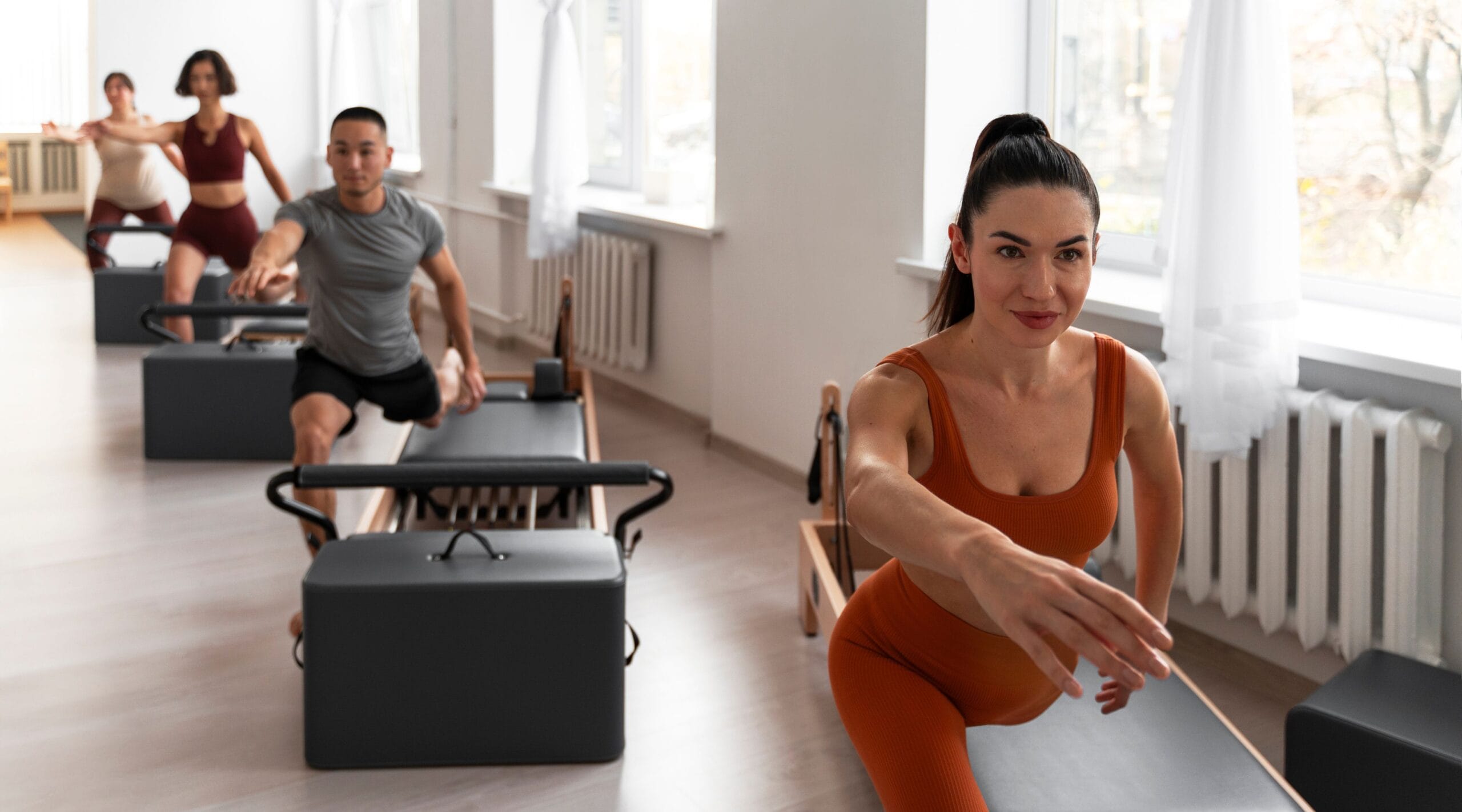
Pilates is a body-mind exercise method developed to build muscle strength, correct posture, increase flexibility, and promote overall body awareness. Unlike high-impact exercise, Pilates is low-impact yet highly effective—attacking core stability and alignment through precise, controlled movements.
Table of Contents
A Brief History of Pilates
Pilates was developed in the early 20th century by Joseph Pilates, a German physical trainer. Originally called Contrology, the method was inspired by a mix of yoga, martial arts, and ancient Greek and Roman physical regimens. Joseph applied his method to rehabilitate wounded soldiers during World War I, even utilizing hospital beds and springs to devise makeshift equipment—an innovation that subsequently developed into the Pilates machine or Reformer.
His system gained popularity in the U.S. among dancers and athletes, and ultimately, the general fitness population, because it is a gentle yet powerful system.
Source: The Pilates Method Alliance
Principles of Pilates: Core Strength, Control, and Flexibility
Pilates has six basic principles at its core:
- Centering: Concentrating energy in the center of the body.
- Concentration: Complete mental concentration on every movement.
- Control: Executing movements with muscle control, rather than momentum.
- Precision: Performing each movement precisely.
- Breath: Synchronizing breathing with movement.
- Flow: Developing fluid, elegant transitions.
Note: These principles interact to create core strength, postural alignment, and total-body flexibility.
Different Types of Pilates Explained
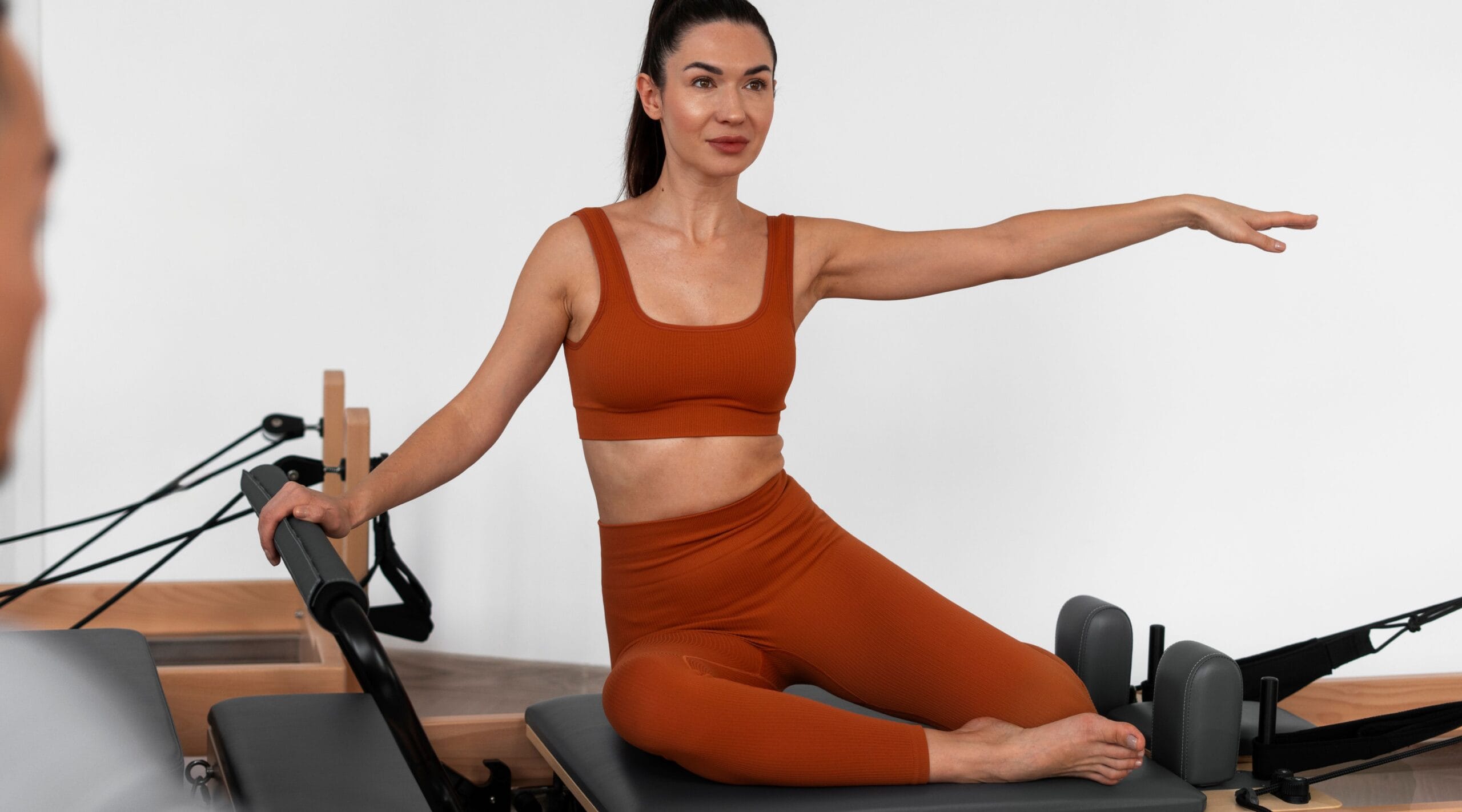
Reformer Pilates vs. Mat Pilates: What's the Difference?
- Mat Pilates uses working out on a yoga mat with body weight resistance. Mat Pilates focuses heavily on the core stability and alignment.
- Reformer Pilates, however, employs an entirely unique machine featuring pulleys, springs, and a sliding carriage to provide adjustable resistance. There’s more variation, precision, and power available—perfect for beginners and athletes fresh out of injury.
Tip: Reformer Pilates can be utilized to provide additional support for joint issues and boost strength and flexibility.
What is Wall Pilates and Why Is It Trending?
Wall Pilates is a new fad where exercises are done with the assistance of a wall. It provides additional resistance and guidance in alignment, and therefore the movements become further functional. It is trendy these days on Instagram and TikTok, particularly among home gym enthusiasts.
- Builds strength using gravity and body resistance.
- Maintains strong posture and proper spine positioning.
- Beginner-friendly with minimal equipment.
Note: Convenient and effective enough to be popular among online fitness professionals.
What Makes Club Pilates Classes Unique?
Club Pilates is an instructor group fitness studio chain that is certified, and they offer Reformer classes.
Benefits:
- Therapeutic, systematic programs for all fitness levels.
- Pilates equipment and leading-edge technology integration.
- Membership rates lower than boutiques.
Note: Club Pilates offers community, consistency, and modern studio experience and is the ideal place to start your Pilates journey.
Visit: clubpilates.com
The Role of Pilates Machine in Your Workout
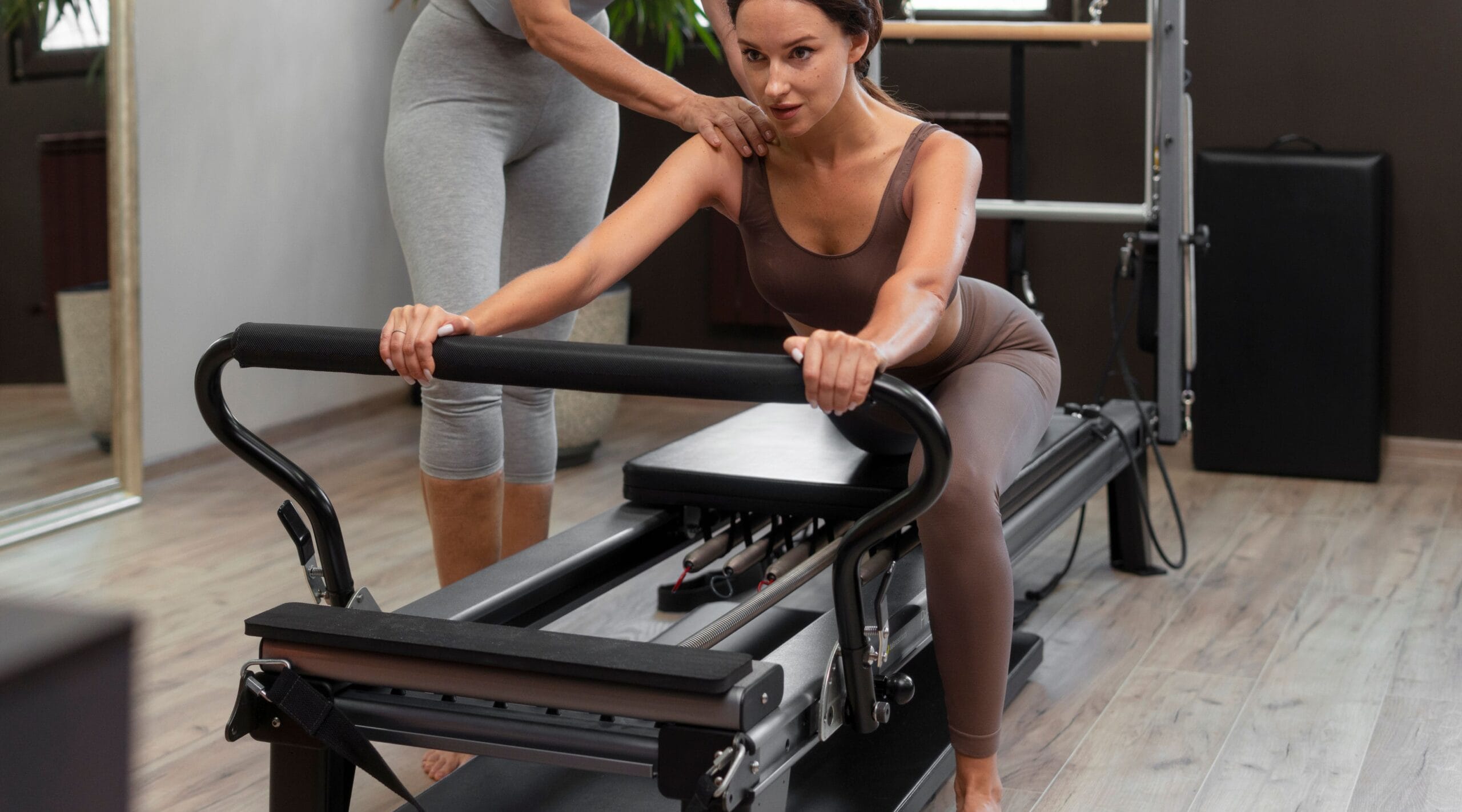
What Is a Pilates Machine?
A Pilates machine, commonly called a Reformer, includes a sliding carriage, resistance springs, adjustable foot bars, and straps. It supports the body while adding variable resistance to intensify your workout safely.
Other Pilates machines include:
- Cadillac
- Chair
- Spine Corrector
Note: These tools help in rehabilitation, strength training, and precision alignment.
Benefits of Using Reformer Pilates Equipment
- Deeper muscle engagement.
- Adjustable intensity for all levels.
- Better posture and joint support.
- Less stress on knees and back.
Note: Using equipment allows for more variety and diversity, especially for people with mobility issues or specific fitness goals.
Can Beginners Use Pilates Machines?
Absolutely Yes….!! Reformer class sessions generally start with exercises that beginners can perform. The machine may intimidate you, but it offers support, guidance, and adjustment that many beginners prefer over mat work.
Health Benefits of Doing Pilates Regularly
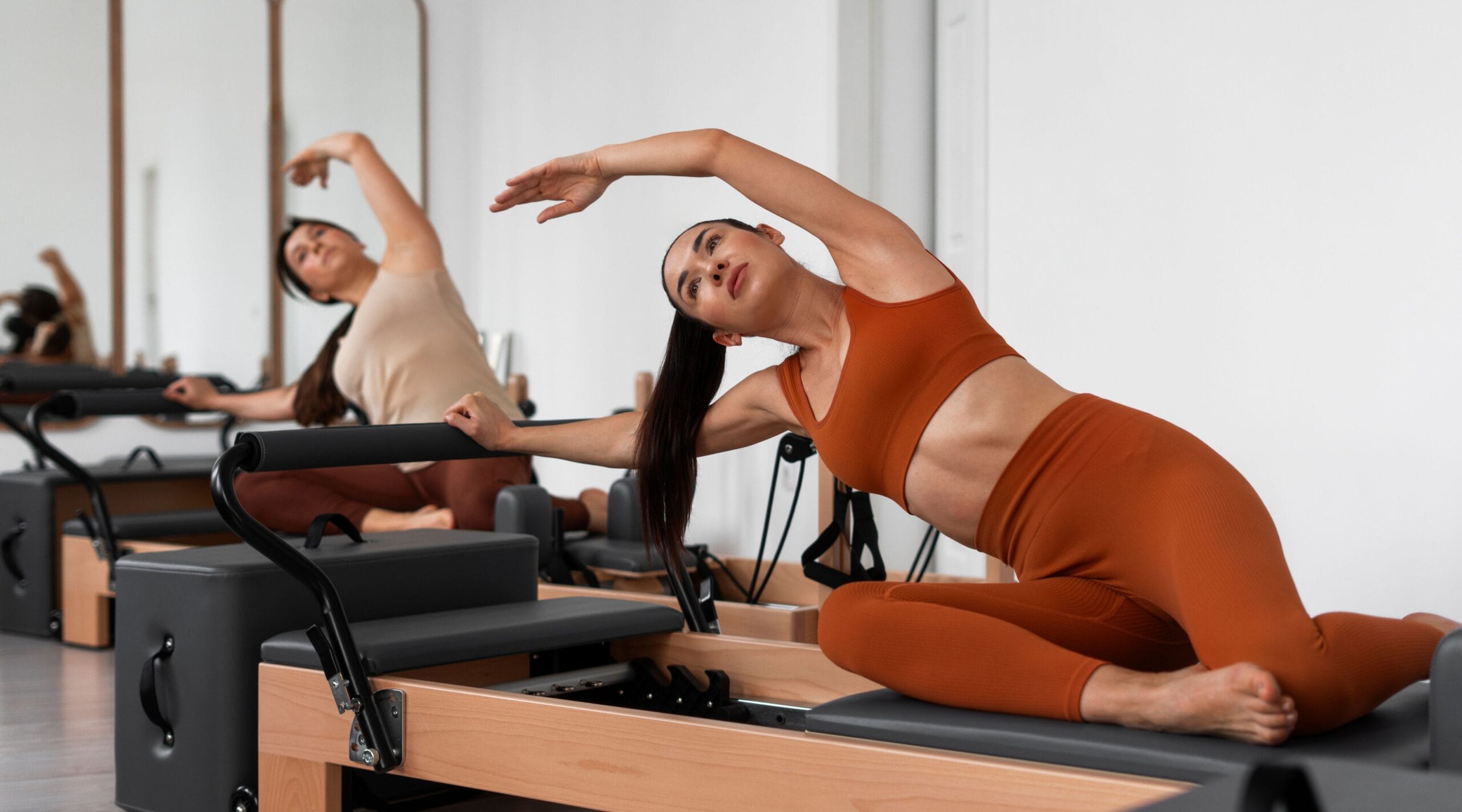
Core Strength and Posture
Pilates is renowned for building a strong core—which includes the abs, lower back, hips, and glutes. This leads to:
- Better balance.
- Reduced back pain.
- Improved athletic performance.
Note: You’ll stand taller, feel more centered, and even reduce your risk of injury.
Weight Loss and Body Toning
While Pilates may not torch calories like HIIT, it’s excellent for toning muscles, increasing metabolic rate, and supporting sustainable weight loss when combined with proper nutrition.
Mental Health and Stress Relief
Pilates incorporates mindful breathing, just like meditation and yoga. It lowers cortisol levels, eases anxiety, and enhances concentration—good for mental clarity and emotional well-being.
Important: Studies show Pilates can help reduce depression and boost mood.
Pilates for Different Age Groups & Fitness Levels
Is Pilates Safe for Seniors?
In fact, Pilates is very good for seniors. It improves:
- Bone density
- Mobility
- Balance and coordination
Note: Gentle movements reduce joint strain and help with arthritis or chronic pain conditions.
Pilates for Beginners: What to Expect
- Start with gentle movements like the hundred, leg circles, and pelvic curls.
- Prioritize form rather than speed
- Begin with 2–3 sessions a week
Note: Most of the studios and applications provide beginner lessons or private instruction.
Advanced Pilates for Athletes
Elite athletes use Pilates to:
- Improve functional movement.
- Develop core strength.
- Support injury recovery.
Note: From LeBron James to Serena Williams, a number of the professionals incorporate Pilates into performance and conditioning training.
How to Start Your Pilates Journey
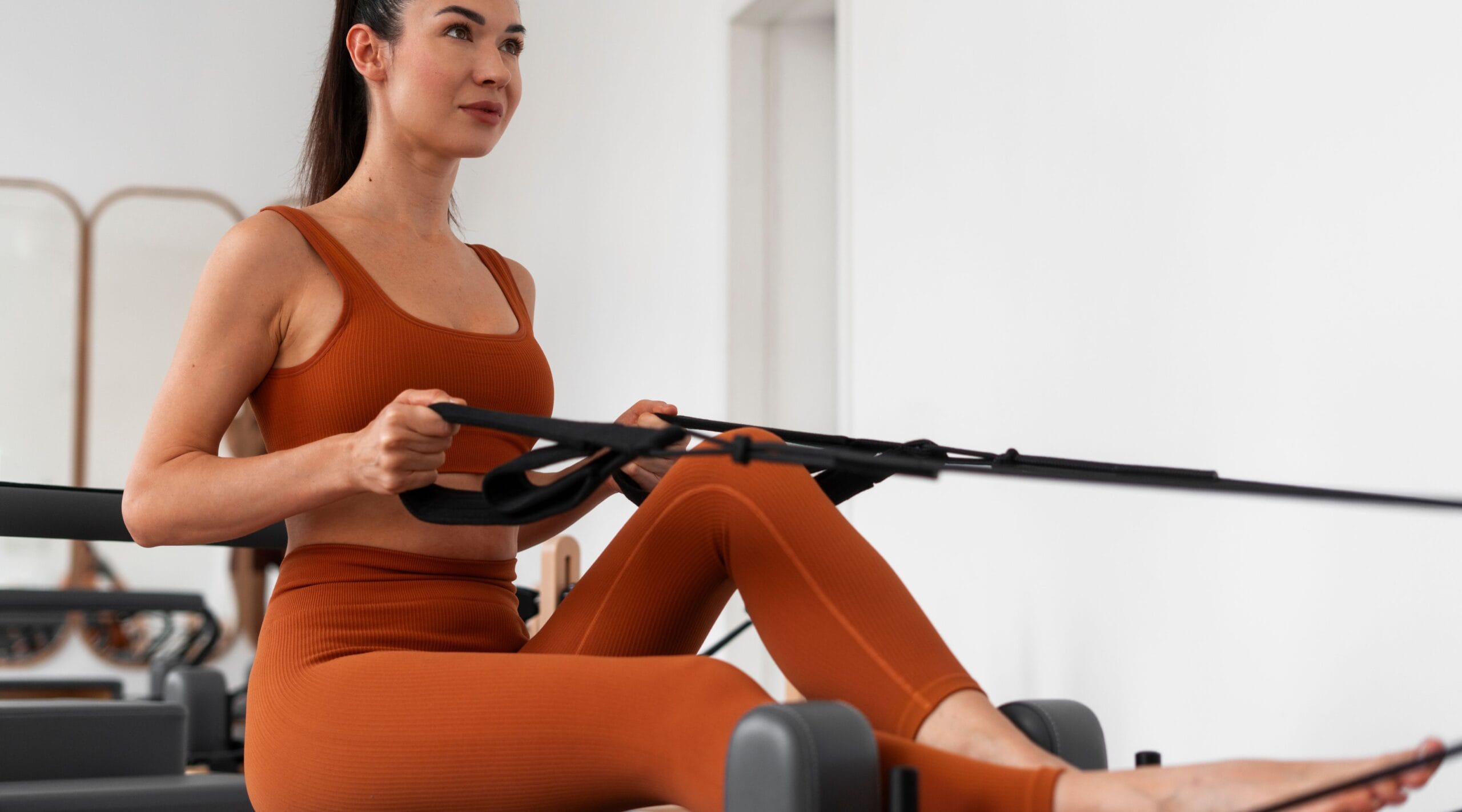
What to Wear to Pilates Classes
Wear stretchy, shape-holding garments—like leggings and a tank top. Avoid zippers and buttons that could damage the mat or equipment. Bare feet or in grip socks are sufficient for most Pilates.
Home Workouts vs Studio Classes
Home Workouts:
- Affordable
- Flexible scheduling
- Ideal for Wall Pilates and Mat exercises
Studio Classes:
- Individualized guidance
- Availability of Reformers
- Motivational group environment
Finding the Right Club Pilates Location or Online Program
Club Pilates is available in all the capitals. For those who prefer online, you can download apps like Alo Moves, Balanced Body, or YouTube Wall Pilates channels that offer guided routines with structured plans.
Frequently Asked Questions (FAQs)
Can You Lose Weight Doing Pilates?
How Often Should You Do Pilates?
For maximum results:
Beginners: 2–3x a week
Intermediate: 3–4x a week
Sportsmen or advanced: 5 days a week with combined routines
Is Pilates Better Than Yoga?
They perform different functions:
Yoga: Ideal for spiritual and intense flexibility training.
Pilates: Great for core strength, alignment, body sculpting.
Note: They complement each other and can be cross-trained depending on your training objective.
Final Thoughts: Should You Try Pilates?
If you’re looking for a low-impact yet effective workout that enhances strength, posture, and flexibility while calming your mind—Pilates is a fantastic choice. Whether you’re a beginner or a pro athlete, there’s a version of Pilates that fits your needs, from Wall Pilates at home to Reformer classes at Club Pilates.
By understanding what Pilates is, how it works, and how it will change your life, you’re halfway to changing your body and mind.
“Ready to roll out the mat or step up onto the Reformer? Go ahead and start your Pilates today—your body will thank you.“

